The Walker of Walker’s Hill.
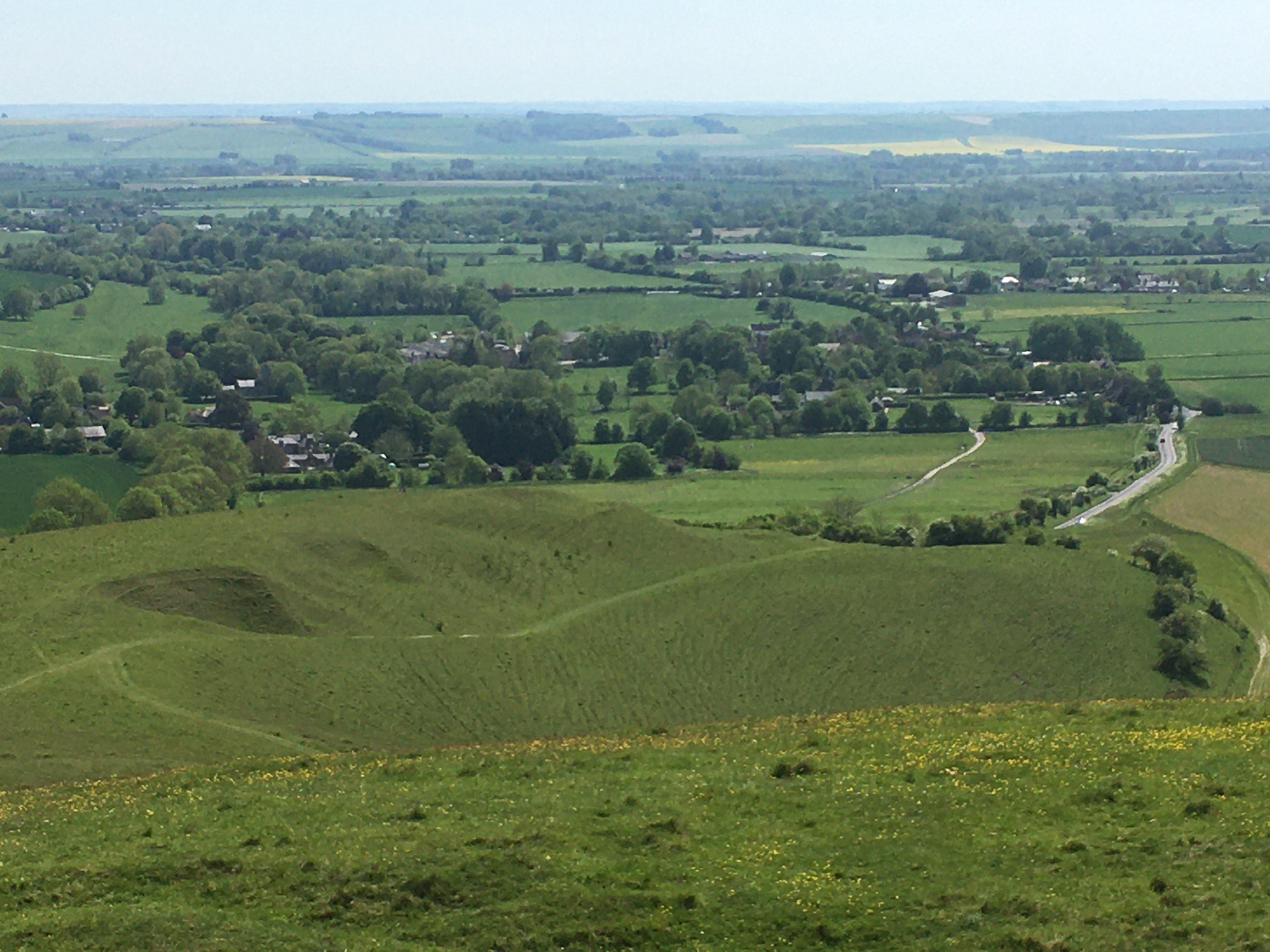
On a Wedgewood-blue day, with the wonderfully floriferous Pewsey Downs still getting going after such a late, cold, spring, we began a long walk with a picnic against the warm, honey-coloured sarsens at the foot of Knap Hill and the Workaway Drove.
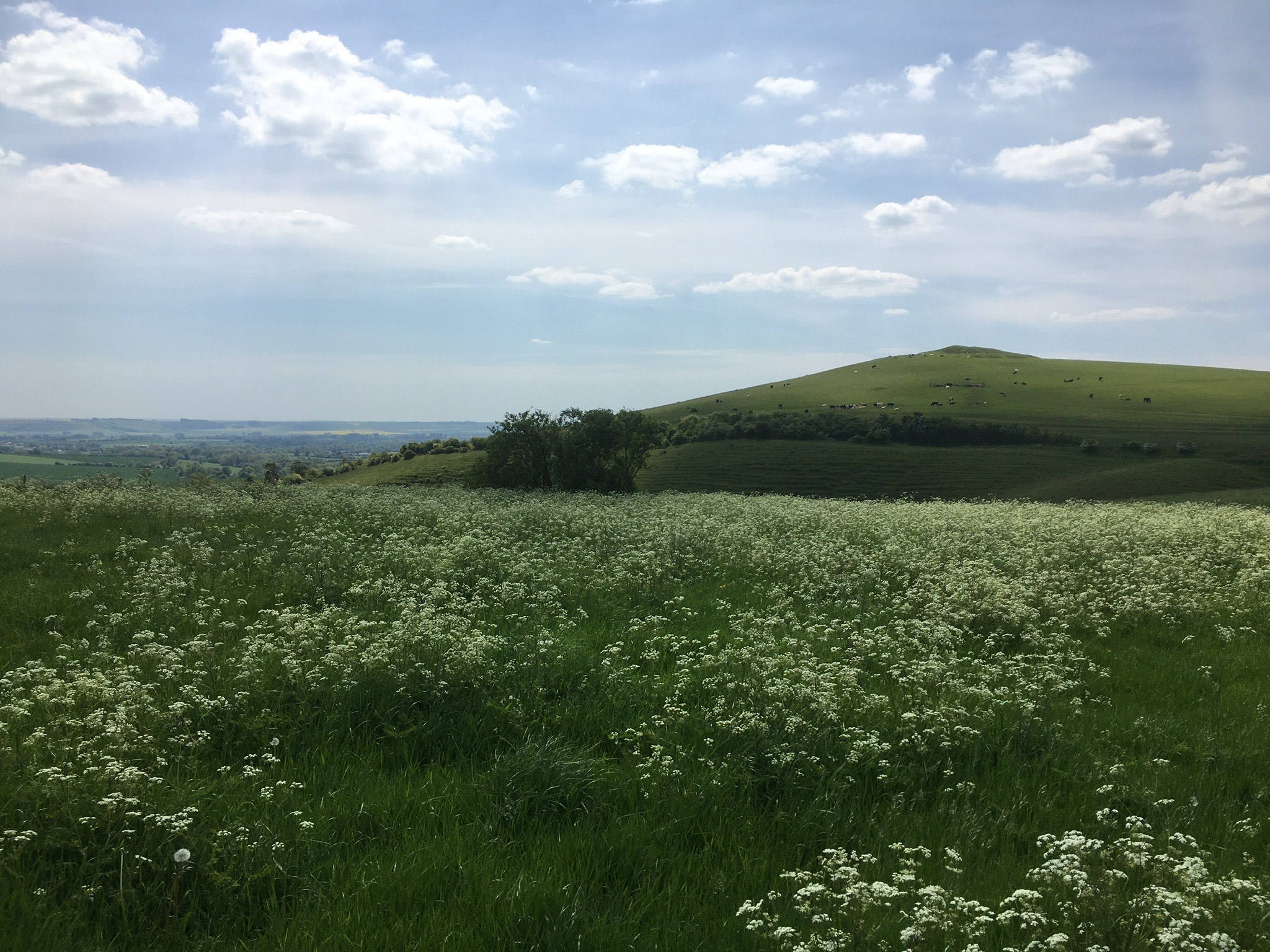
High above the froth of hawthorn blossom and cow parsley, we idly watched the distant wasp of a Chinook helicopter drop lower and lower until it came right overhead, at airshow height. We flattened ourselves on our backs in the buttercups and squealed as the beat of the double rotorblades thumped into our chests and the ground beneath us. No picnic in Wiltshire is complete without such an event.
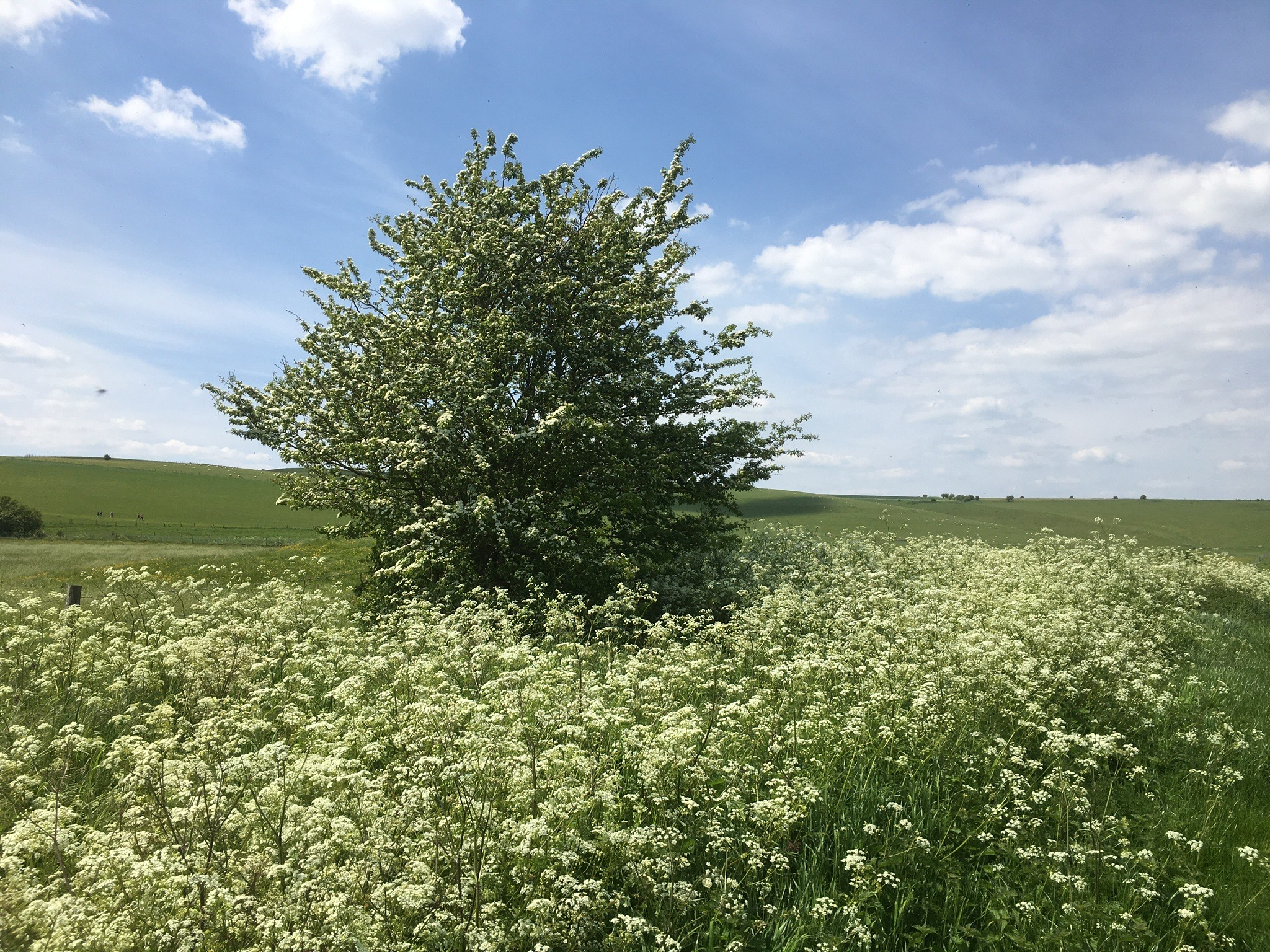
We headed up Walker’s Hill, and a narrow chalk ribbon to the sky at the summit, over the dramatically poised Neolithic long barrow of Adam’s Grave.
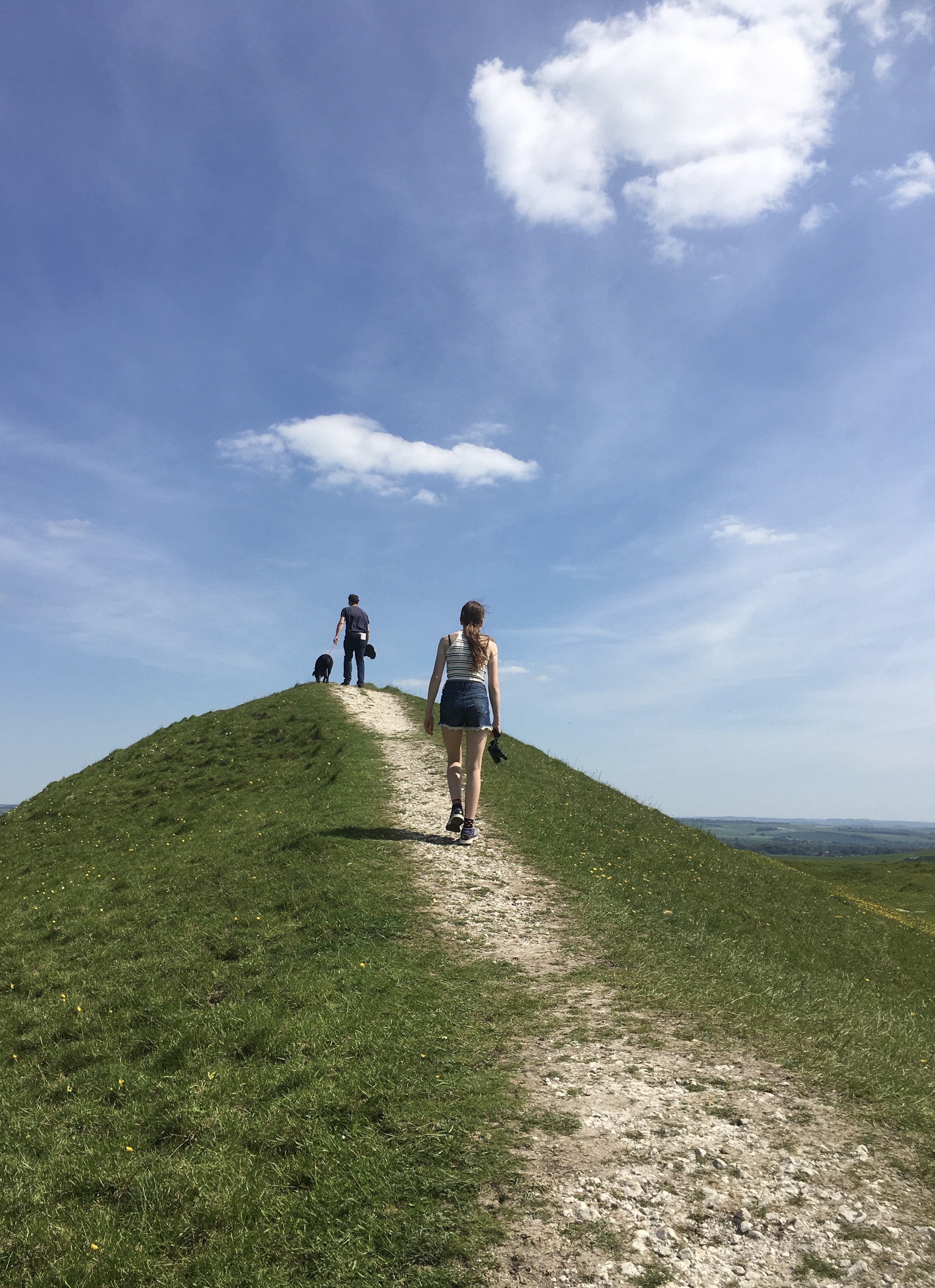
The view was a far-reaching, 360degree panorama of farm and downland, pocked and bumped with barrows. This intersection of The Ridgeway and Wansdyke trackways, was the site of two Anglo Saxon battles. Traffic noise drifted above the wind and skylarks, from the Herepath, or ‘War Road’ below, where the old name is still recorded at Harepath Farm.
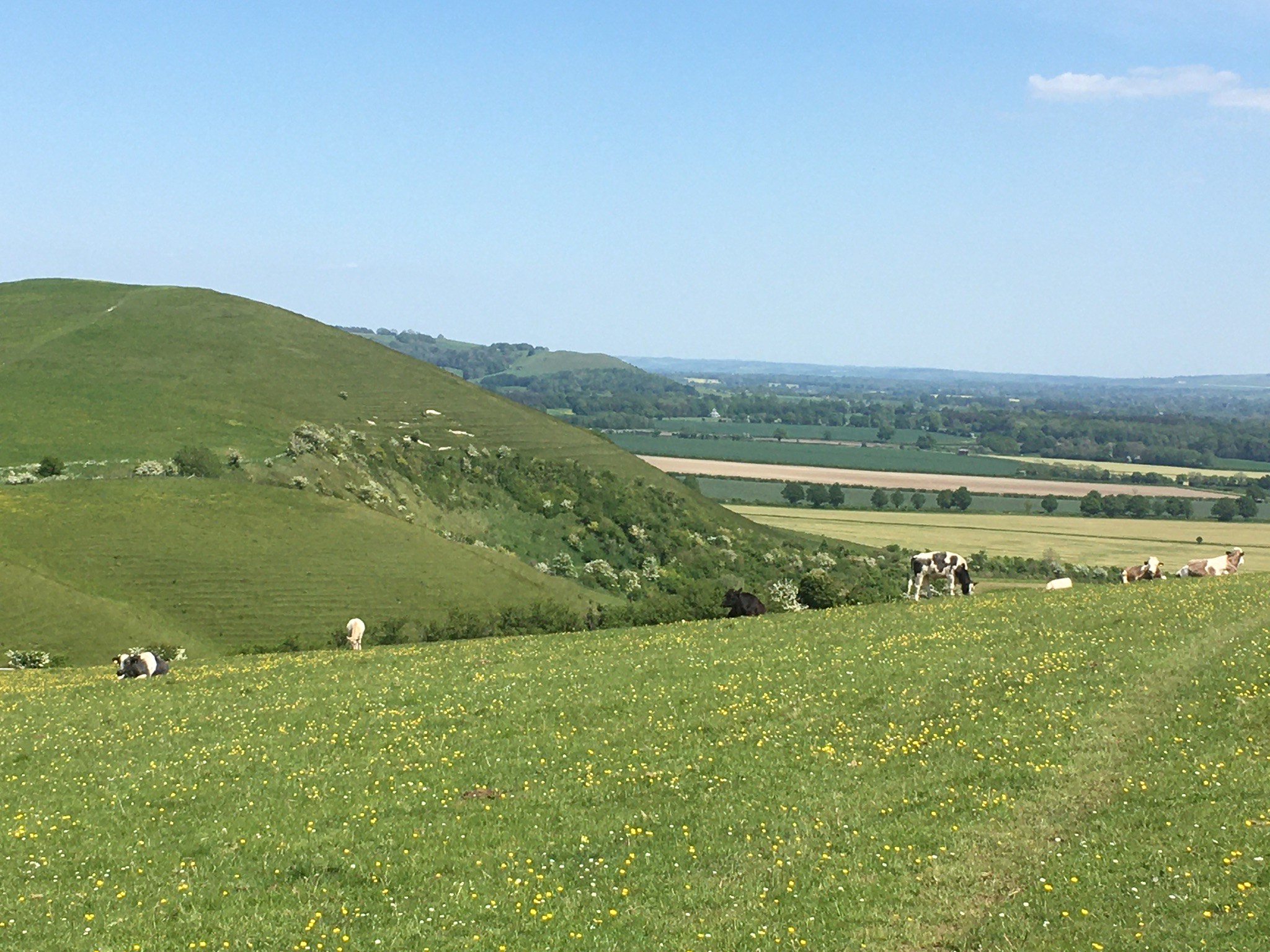
There were few people about, but we nodded and smiled at a walker, coming down the chalk path with a dark, canvas pack on his back and leather looking chaps or wraps on his legs. His eyes crinkled in reply. We walked The Hollow into Alton Barnes to Honeystreet, before returning to the ridge through all the silky, waist high barley.
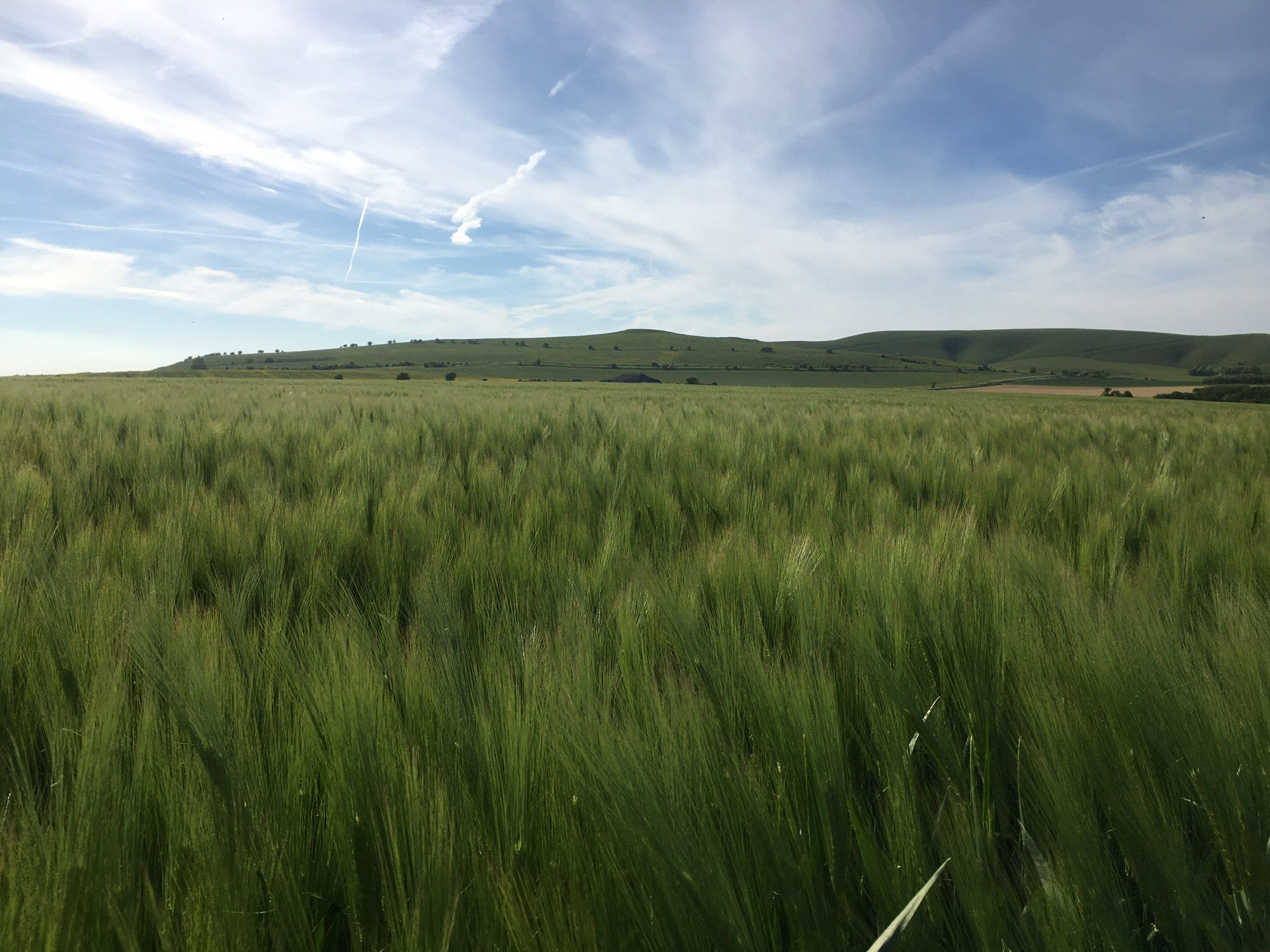
The wind hunted through it, moving it into a vast, rippling, emerald sea below the hooves of the Alton Barnes White Horse, giving the chalk-scoured animal movement. The horse was made on the instruction of Farmer Pile in 1812, who paid an advance sum of £20 to John Thorne, or ‘Jack the Painter’ who offered a drawing, sub-contracted the cutting and disappeared with the money.
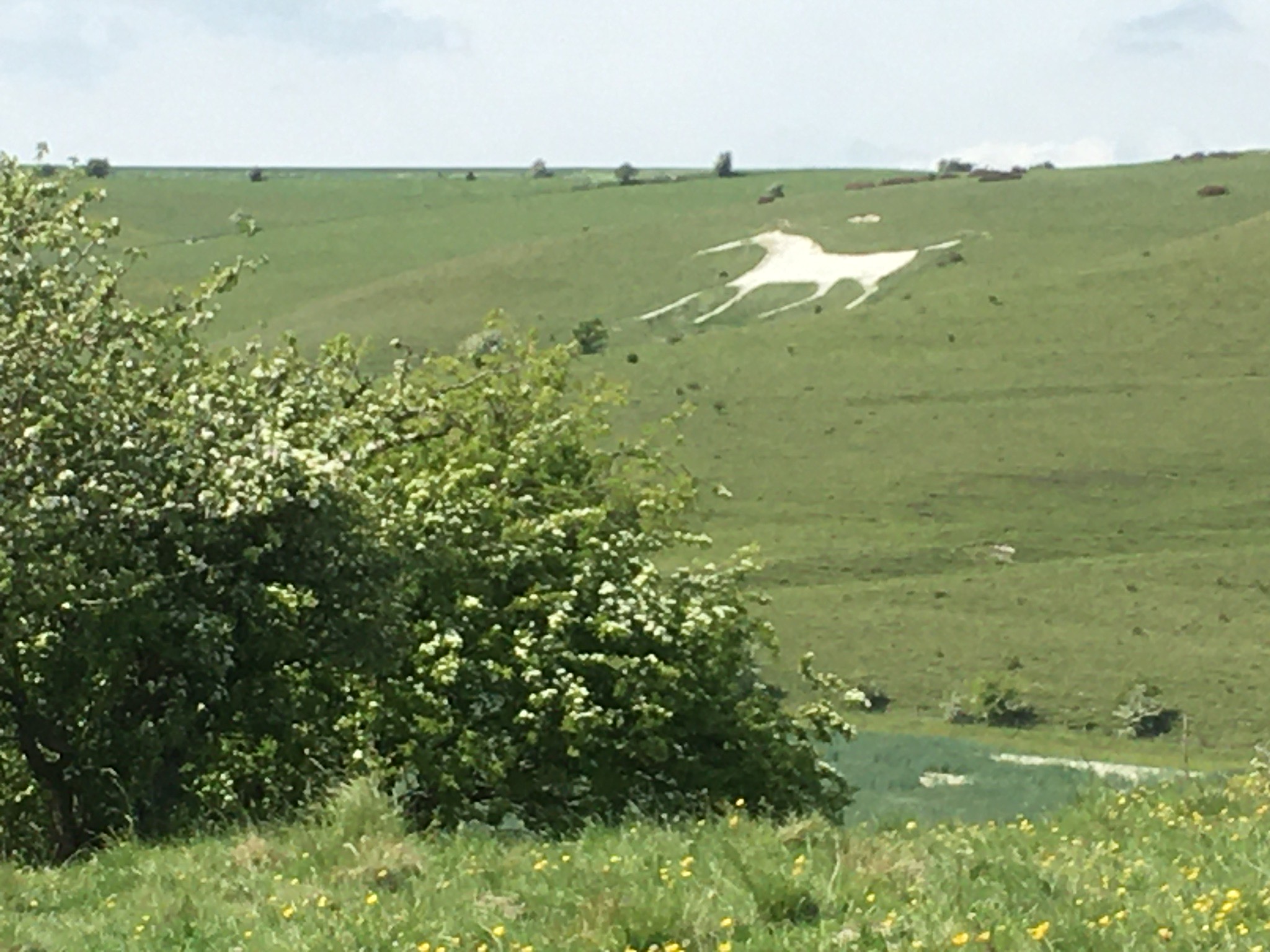
Milk Hill, Wiltshire’s highest point, stretched above and we found ‘bunches of keys’ of two kinds: the metallic, key-rattle of corn buntings (heads thrown back, lower bills unhinged) & the golden keys of cowslips.
The climb didn’t matter much, as I couldn’t take my eyes off the close-embroidered, mat-forming, tump-hugging glory of the early summer wildflowers: cottony kidney vetch, sky-blue chalk milkwort, yellow rock rose, salad burnet and sainfoin – all attended by so many glittering winged insects, including dozens of iridescent verdigris-green ‘scarce forester’ moths & a similar number of tiny, fast-tumbling Duke of Burgundy butterflies, in their chocolate-orange chequerboard finery.
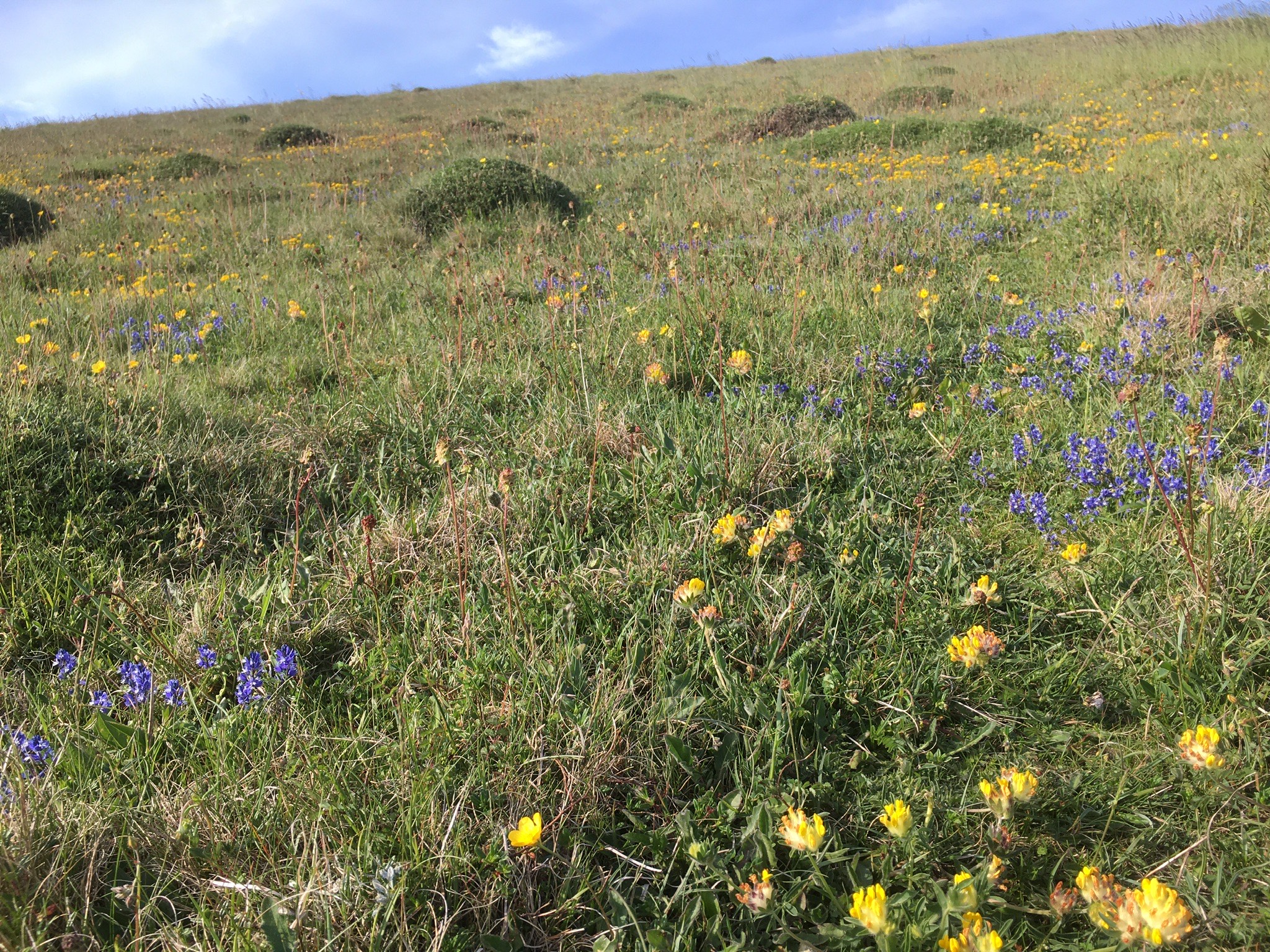
The walker appeared ahead of us on occasion; closing and lengthening the distance between us almost supernaturally. At one point, looking back, I thought I’d seen him behind. He had looked, from his weathered state and heavy pack to have been long-walking.
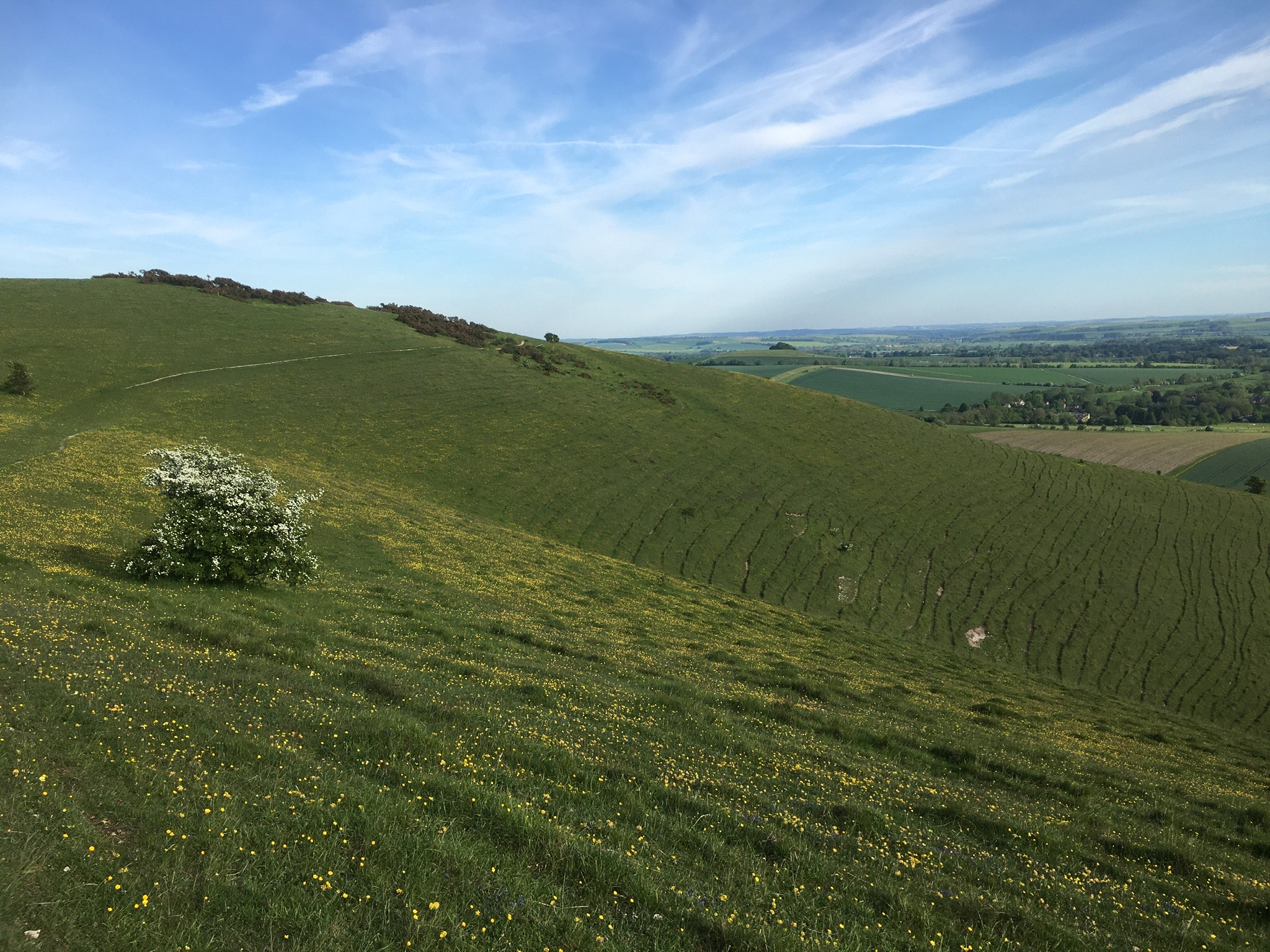
I thought of Edward Thomas’s poem of the half-mythical ‘Lob’ that begins ‘At Hawthorn time in Wiltshire travelling,’ and it’s influence too on Melissa Harrison’s novel, At Hawthorn Time. There is always the spirit of ‘a long walker’ in any part of the country. Wherever I have lived I have known one. A ‘crow man’ or a scholar gypsy. Perhaps this was ‘old Adam Walker’, the walker of Walker’s Hill. I would loved to have gone ahead to try and catch him up, or indeed, waited for him to catch up – to talk and walk with him for a while; but a little part of me thought that might just not be possible somehow.
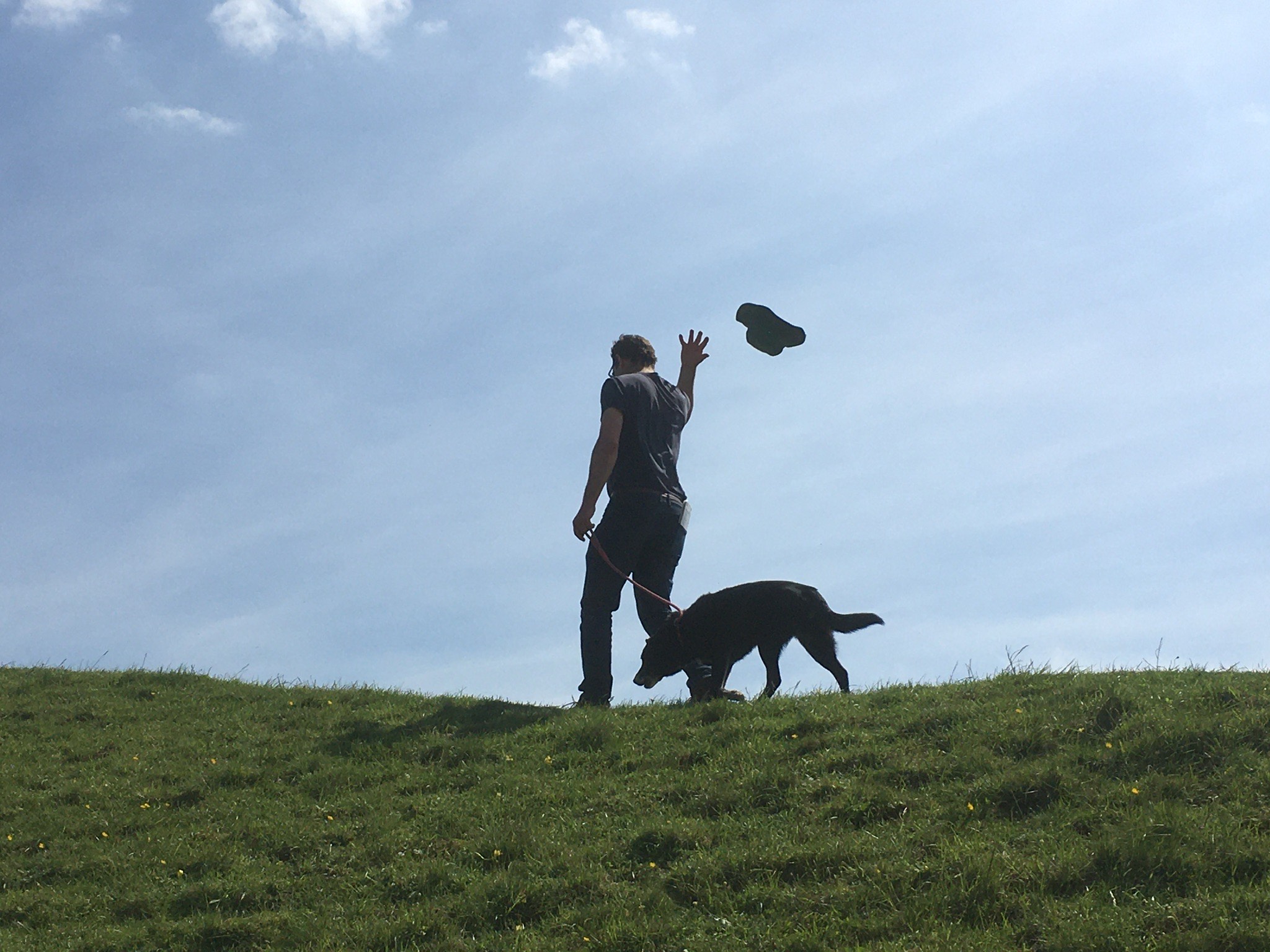
Leave a comment